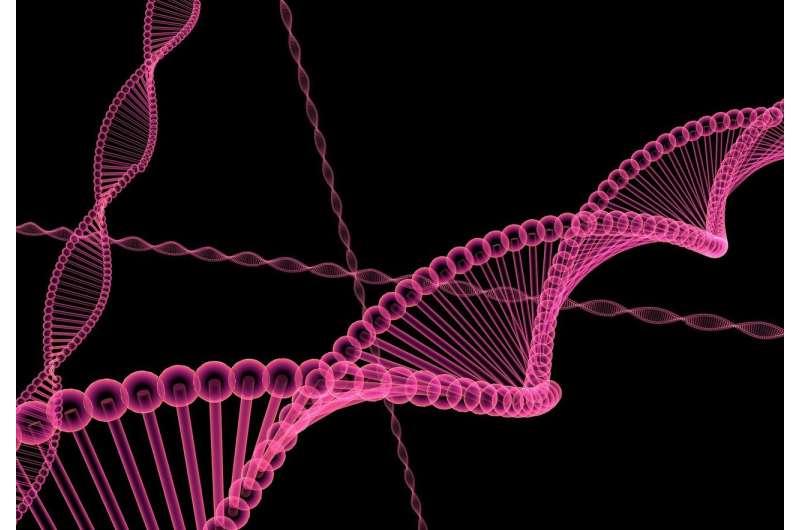Simple yet powerful model predicts DNA organization

Scientists often try to understand important processes in the cell by interfering and observing what happens. But often the cell just dies.
That was the problem that Andrew Spakowitz, associate professor of chemical engineering and materials science and engineering at Stanford University, foresaw for scientists trying to understand how essential information in DNA is organized in our cells.
To get around this problem, Spakowitz and his team built a computer model to manipulate "cells" in a simulation – without killing any real cells in the process. Their model predicts how changes in the cell affect the way DNA gets packaged. This information will lay a foundation for other lab experiments to understand how DNA organization affects which genes are turned on or off.
"The question was if there's any hope of capturing essential behaviors in an undeniably complex living system with something as simple as our model," Spakowitz said. The answer, which they report in the Proceedings of the National Academy of Sciences, was a resounding yes.
Organizing the DNA
There's about six feet of DNA in each human cell. To fit all of it, long strands of DNA wind around protein clusters called histones. Genes in tightly-wound DNA, called heterochromatin, are often turned off because they are difficult for the cell to access.
The computer model shows regions of heterochromatin, which look like dense wads of string, and open regions called euchromatin – places where genes are often active. By looking at how DNA is packaged in the cell, the researchers can infer which genes are likely turned on or off.
"Establishing a connection between the physical organization of DNA and gene expression is an essential step in understanding how the cell controls which genes are expressed and which aren't," Spakowitz said.
To understand the factors that determine how DNA gets organized, Spakowitz and his team tweaked the "cells" in their computer model to see how certain changes would affect how DNA was packaged in the nucleus. For example, when they added more of a protein called HP1 that is involved in turning genes off, the DNA formed dense clumps. These regions also had histones marked with chemical groups that silence nearby genes.
A model for reality
To verify that their model works, the team compared the model's predictions to outcomes from real-world experiments. They analyzed data from lab experiments that freeze the cell at a specific moment in time, essentially taking a snapshot of how the DNA is organized. When the team simulated those experiments in the model, they saw the same results as they did in real cells.
"Just putting in one factor shows huge agreement between the simulated and experimental data," said Quinn MacPherson, a physics doctoral candidate in the Spakowitz lab. This told the team that its simple model could accurately predict how DNA would be organized in real cells.
Systematically changing things in a simulated cell would allow researchers to manipulate the DNA in experiments that would be infeasible at the lab bench. "These experiments could cost tens of thousands of dollars and countless hours in the lab, but we can just twiddle a knob on the computer," said Bruno Beltran, a biophysics doctoral candidate in the Spakowitz lab.
Running a simulated experiment before doing the benchwork could help researchers prioritize which lab experiments to do. Spakowitz and his team hope their model will provide a guideline to inform others' research on how DNA organization affects which genes are turned on or off.
More information: Quinn MacPherson et al. Bottom–up modeling of chromatin segregation due to epigenetic modifications, Proceedings of the National Academy of Sciences (2018). DOI: 10.1073/pnas.1812268115
Journal information: Proceedings of the National Academy of Sciences
Provided by Stanford University



















